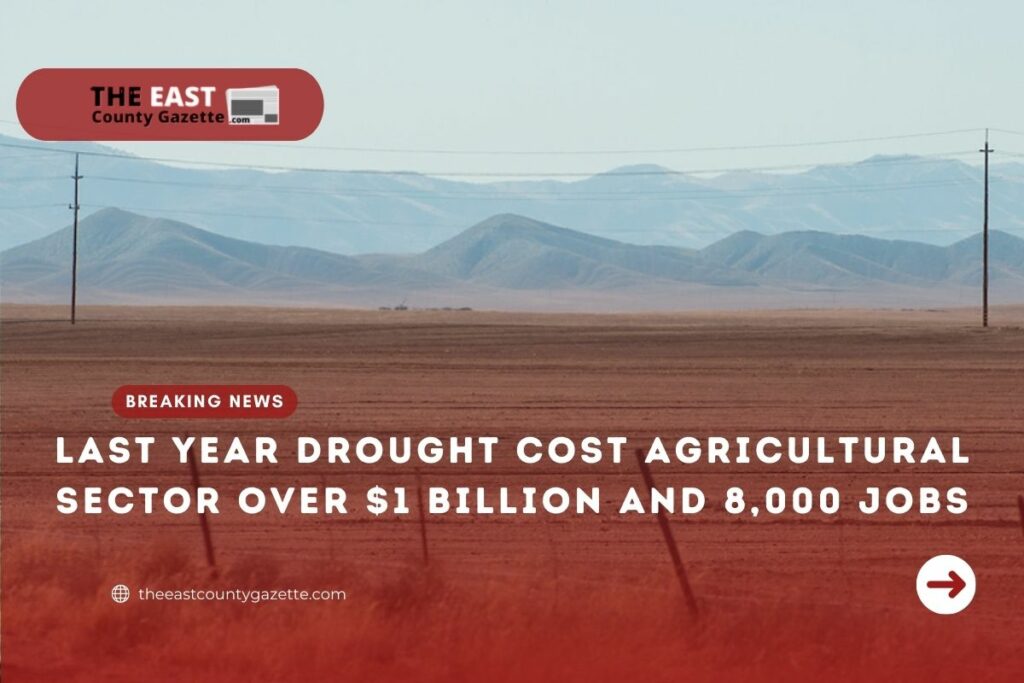A new analysis, led by UC Merced researchers, estimates that the drought directly cost the California agriculture sector $1.1 billion and nearly 8,750 jobs, researchers at the University of California disclosed.
When the impacts on other economic sectors are taken into consideration, the total impact is estimated at $1.7 billion and 14,634 full- and part-time jobs are lost.
The Economic Impacts of the 2021 Drought on California Agriculture Preliminary Report, published on Feb. 24, examines how last year’s drought affected the Central Valley, the Russian River Basin, and the northern intermountain valleys. Researchers created these preliminary estimates of economic impacts by comparing survey results, hydrological information, and remote sensing data collected from those areas with average conditions and the 2012-2016 drought.
Approximately 395,000 acres of idle land are identified in the report.
The most affected regions were the Sacramento Valley, the San Joaquin Valleys west side, Tulare County and Kern County. The Russian River Basin and the intermountain agricultural areas in Siskiyou, Shasta, and Modoc counties have also been affected by the drought. The Sacramento Valley’s rice production, the San Joaquin Valley’s cotton production, and California’s grain and field crop production are the crops most affected by increased fallowing.
“In comparison with the 2012-2016 drought, conditions were much worse for the Sacramento Valley and the Russian River Basin, yet the statewide impacts have not been as severe as in 2015 — the deepest point in the last drought,” School of Engineering Professor Josué Medellín-Azuara, lead author of the report, stated.
Read More: California Ranks High in Performance as 85.2 Million COVID-19 Vaccinations Occur in the Golden State
“Should dry conditions persist throughout 2022, a higher tier of adaptation measures may come into play to reduce economic impacts on agriculture and communities that host thousands of households relying on agriculture for a living.”
Also mentioned in the report is the fact that commodity prices have helped mitigate some of the economic costs of the drought in 2021.
Californians are accustomed to droughts, but the water years of 2020-21 were the second driest on record. Despite widespread precipitation deficits, the Sacramento Valley and the North Coast regions experienced more severe drought conditions.
“This has been a fast-paced drought and it shows how climate change increases the challenges we face in managing water in California,” said researcher and co-author Alvar Escriva-Bou, an engineering and policy expert at the Public Policy Institute of California.
“Sadly, we are going to see more and more droughts like this, so we need better tools to anticipate and minimize the socio-economic impacts.”
According to the researchers, drought is not solely defined by water availability. As temperatures warmed and conditions dried, crop irrigation demands increased. This widened the gap between irrigation needs and water supply.
“Warming has impacted seasonal water availability, namely through reducing spring snowmelt runoff and through increasing atmospheric thirst,” Professor Abatzoglou, a climate expert and co-author of the report, said.
“These factors in concert have intensified drought severity and impacts in the state and increased the need for actionable solutions to cope with drought.”
Sustainable Groundwater Management Act (SGMA) sustainability plans were implemented during the early phase of the drought. Under the Act, groundwater use is designed to avoid the unintended consequences of unsustainable use.
“It is no surprise that California leans more heavily on groundwater to help meet its water supply needs during drought. SGMA is now well underway, and it is shaping how we respond to drought, especially in the Valley. Despite the very real economic impact, this report also indicates an enormous capacity for innovation and adaptation in the agricultural industry, not limited to augmenting cattle feed with almond hulls —typically a byproduct — and also direct investments in aquifer recharge techniques and technologies,” co-author Professor Joshua Viers said.
“These innovations, coupled with better information about water application and use, will ultimately help us manage scarce water supplies more effectively.”
Using a $1.5 million research grant from the California Department of Food and Agriculture, Medellin-Azuara, Abatzoglou, Viers and Escriva-Bou have developed an economic analysis, as well as decision-support tools for the agriculture industry in droughts. The study’s other authors include UC Merced Environmental Systems graduate students Spencer Cole and José M. Rodriguez-Flores, as well as UC Davis Professor Daniel A. Sumner.
“In the weeks to come, the research team will work with its expert advisory panel, stakeholders and partner groups to update ongoing drought conditions and impacts on the agricultural sector, as well as data and assessment tools, to inform drought management and decision making,” Medellín-Azuara stated.

